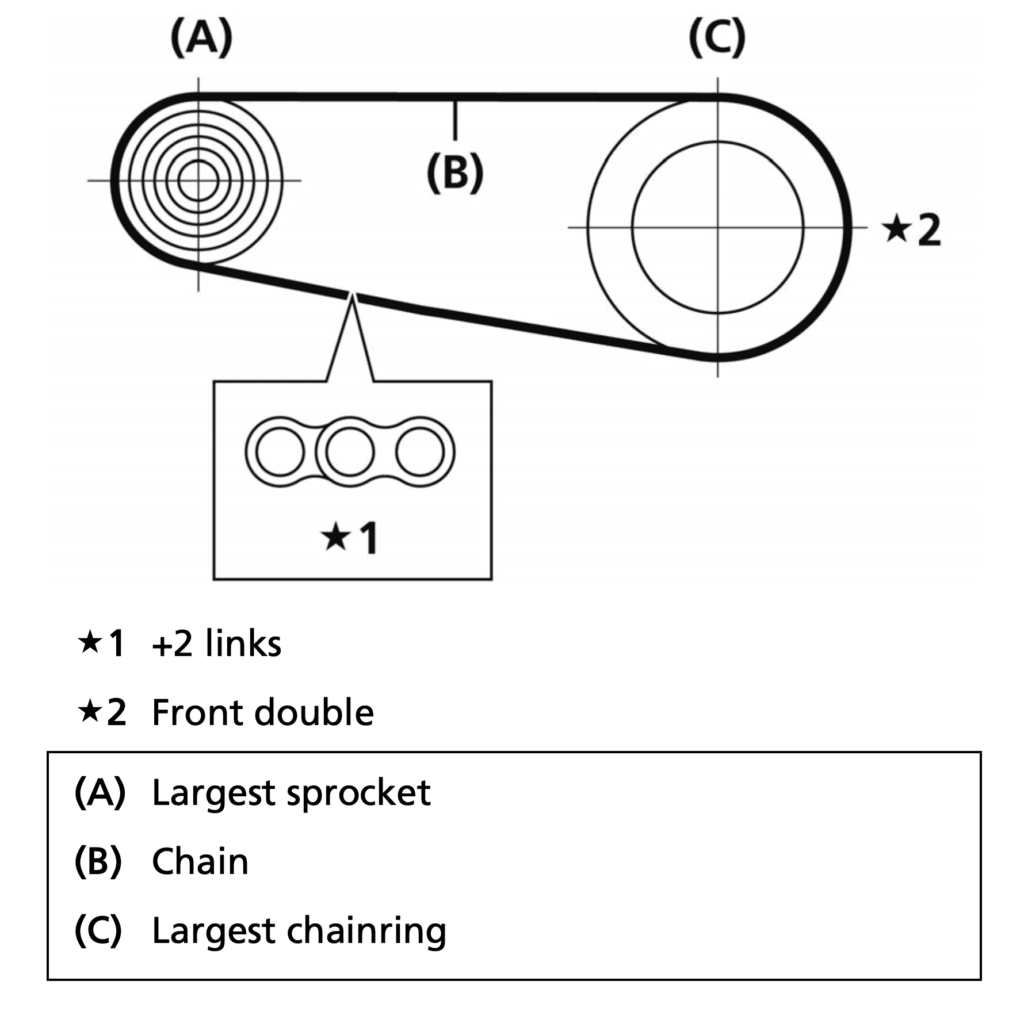New bike chains usually come longer than needed. For example, Shimano chains come in either 116 or 126, SRAM in 114 or 120 links, and Campagnolo in 114 links.
For most cyclists, you’ll need to size the new chain up to match your gearing combination to perform as expected. In other words, cut them to the ideal length.
This article will discuss how to measure the ideal chain length.
Why do you need to size the chain correctly?
An incorrectly sized chain might cause shifting problems which can be annoying in the long run.
The chain is sized to the current gear combination. If you regularly swap cassettes of different sizes, you want to size the chain according to the largest sprocket.
If the chain is,
- Too short, it puts a lot of stress on the rear derailleur and pulley wheels and may cause it to jam and damage, especially on the largest chainring + largest sprocket combo.
- Too long will sag and risk dropping when on the smallest chainring + smallest sprocket combo. The chain might also contact itself as it passes through the upper and lower pulley wheels.
Largest chainring and cog method

- Remove the existing chain, if any.
- With no chain installed, shift the front derailleur over the largest chainring and the rear derailleur over the largest cog.
- Thread the chain through the front derailleur cage and over the largest chainring, then wrap it around the largest rear sprocket. Do not thread the chain through the rear derailleur pulley wheels and cage. If it’s a 1X system, wrap the chain around the single chainring.
- If you’ll be joining the chain using a master link, then install one side of the master link. This will take into account its ½” length. Then look for inner plates on both ends.
- Pull the chain together and take note of the rivet where both ends could be joined.
- Look for the closest combination of the inner and outer plates on each end. If you can’t find a matching combination, move up to the next closest one.
- Add two more rivets (1 inch) from the rivet marked in the step above. This is where you’ll cut the chain.
- If you’re running a 1X system with a rear sprocket larger than 36T, then add four more rivets (2 inches).
- Cutting the chain too long can be easily rectified than cutting it too short.
Can I size it according to the old chain?
Yes, you can if the old chain is sized correctly.
Lay both the new and old chains straight and flat. The old chain will be slightly longer due to wear. Match up the rivets as close as possible. Give the old chain a bit of slack to match them up.
Take note of the inner and outer plates when matching.
More reading :

Alex Lee is the founder and editor-at-large of Mr. Mamil. Coming from a professional engineering background, he breaks down technical cycling nuances into an easy-to-understand and digestible format here.
He has been riding road bikes actively for the past 12 years and started racing competitively in the senior category during the summer recently.